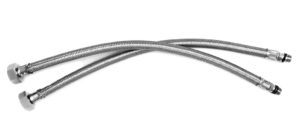 A blown radiator hose can lead to serious issues in your car. While many mechanics and manufacturers recommend changing out your radiator hose and hose clamps about once every four years, let’s face it: no one really likes to make an extra trip to the body shop if they don’t have to.
A blown radiator hose can lead to serious issues in your car. While many mechanics and manufacturers recommend changing out your radiator hose and hose clamps about once every four years, let’s face it: no one really likes to make an extra trip to the body shop if they don’t have to.
Luckily, replacing your radiator hose and hose clamp is a relatively simple do-it-yourself job, so long as you have the right materials and automotive know-how. While the type of hose you choose will largely depend on the make and model of your car, there are actually several different types of hose clamps you can use to secure the attachment. Here’s a basic overview of the three best kinds for radiator hoses, and the pros and cons of each one.
Band Clamps
Band clamps are the most common kind of hose clamp, which makes them relatively easy to find. The screw used for loosening and tightening makes them simple to adjust as well. Look for stainless steel clamps that will withstand the conditions of living alongside your radiator and keep your car protected for the next four years.
Wire Clamps
Wire hose clamps are made of heavy wire that is bent into a tight U shape for clamping. They often appear on foreign cars; if your car came with a wire clamp, it’s probably best to replace it with the same kind. They can be a bit of a pain to loosen, but once they’re on they should last you for a long time.
Crimp Clamps
Many new cars are using crimp hose clamps instead of band clamps or wire clamps. Unlike the others, however, it’s OK to use a different kind of clamp on your radiator hose if you’re worried about it giving out. While crimp clamps are reliable, stainless steel or wire clamps might be a better bet in terms of longevity. We know, you must be shocked to learn that automakers are using cheaper parts than they used to.
Some vehicles may have their radiator hoses tucked away in hard-to-reach areas, in which case it may be worthwhile simply going to the mechanic to change out the hose and clamp together. But if you’re not afraid to get your hands a little bit greasy, this simple DIY fix can help you rest assured that your radiator and your car will keep on working the way they should.

